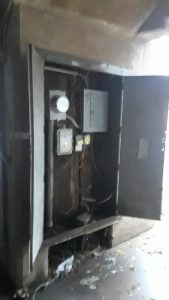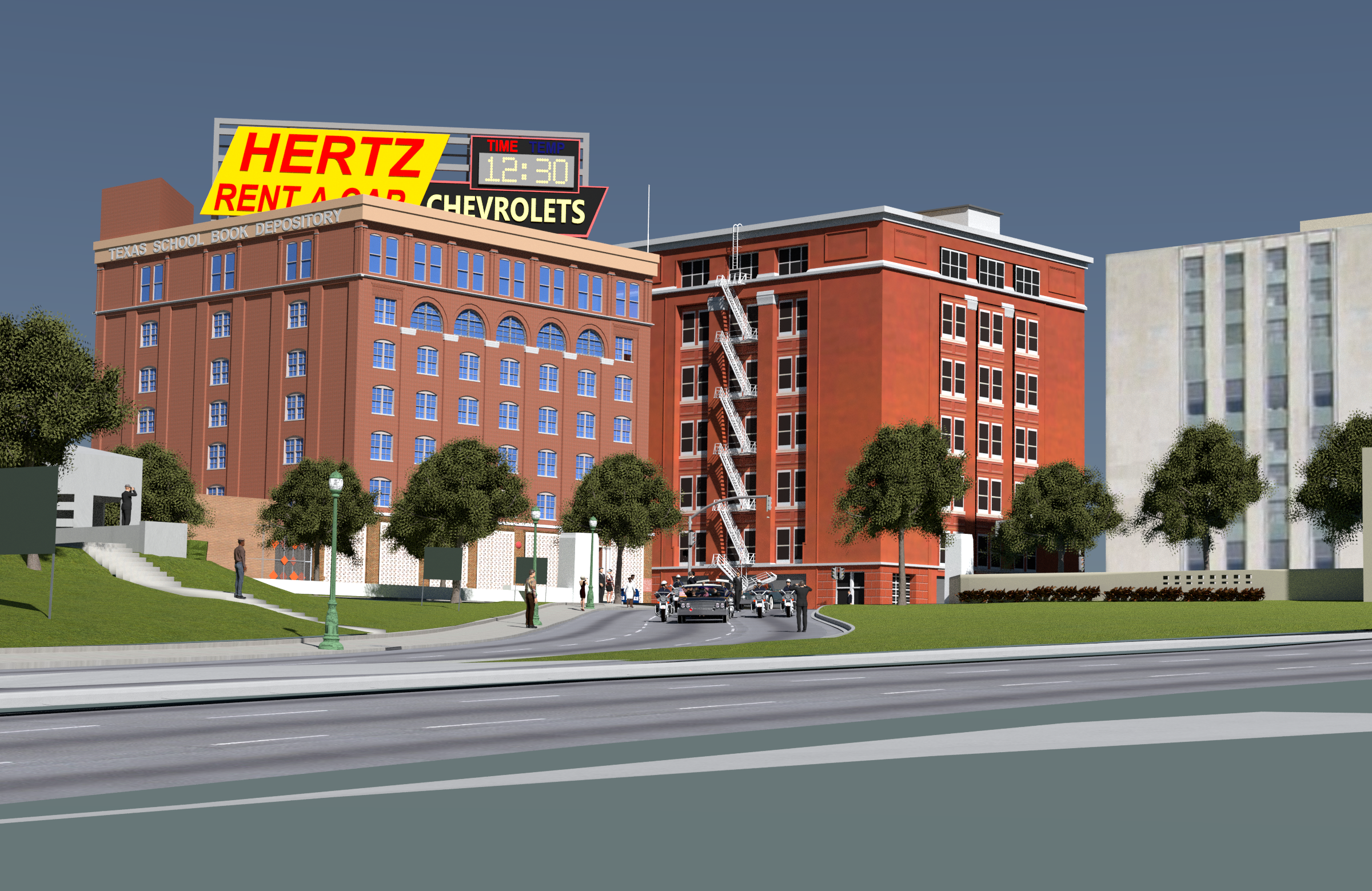As I meticulously explain in chapter 17 of my book, the shot that struck JFK in the throat, came from the South knoll underneath the triple underpass. That is the only shot trajectory which obeys the unique layout found in Dealey Plaza. In my book, I presented this explanation by first generation researcher/architect/assassinologist Robert Cutler, which he published in Jerry Rose’s “The Third Decade” in 1992.
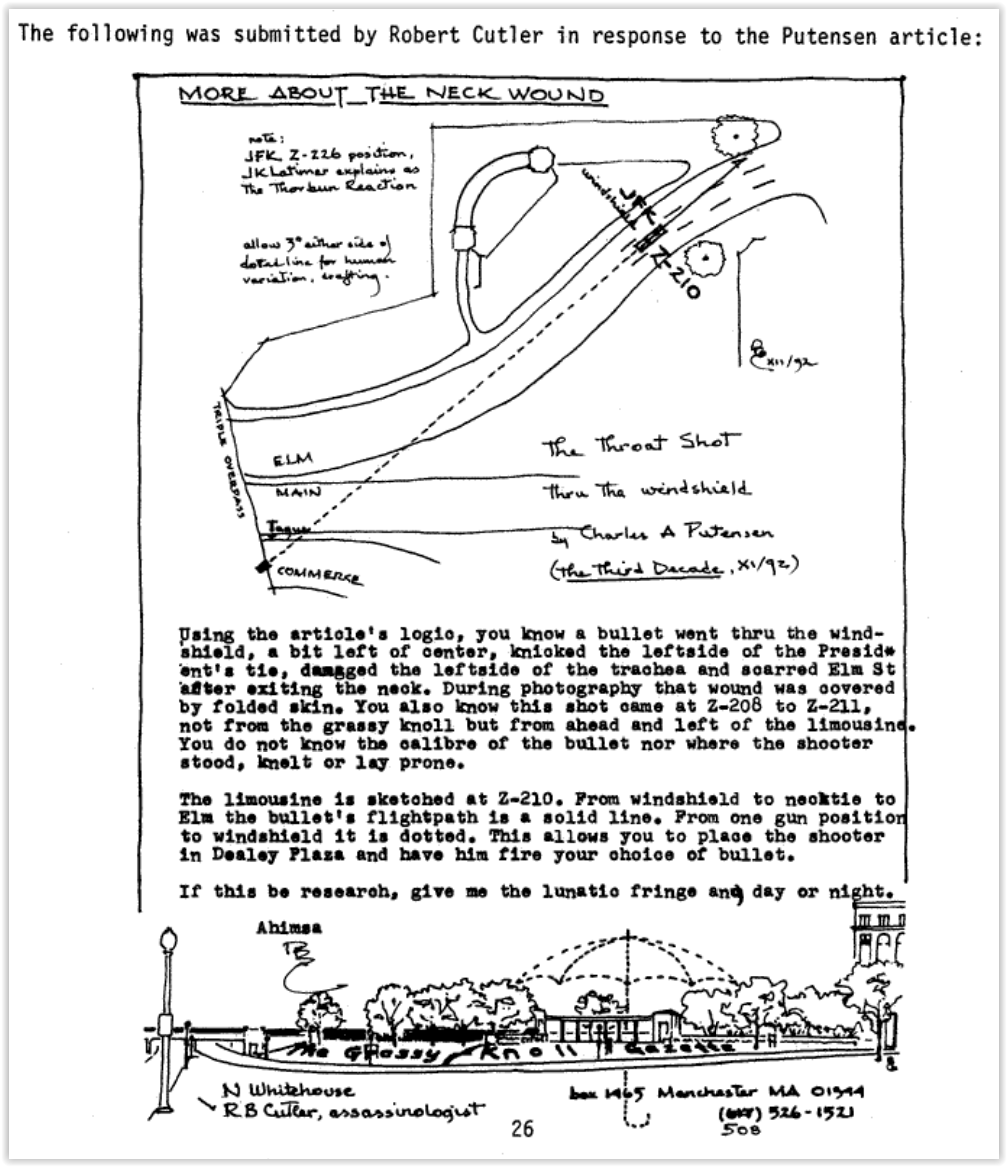
Cutler clearly understood the topography and layout of Dealey Plaza. That is why in our Blender 3D model I have used his map as an essential reference image. In this diagram, Cutler estimated (and I agree) that the throat shot occurred between Zapruder frames 208-211. This shot went through the windshield before striking JFK:
“Using the article’s logic, you know a bullet went through the windshield, a bit left of center, knicked (sic) the left side of the President’s tie, damaged the left side of the trachea, and scarred Elm Street after it exited the neck. During photography, that wound was covered by folded skin. You also know that shot came at Z-208 to Z-211, not from the grassy knoll, but from ahead and left of the limousine. You do not know the caliber of the bullet nor where the shooter stood, knelt or lay prone.
The limousine is sketched at Z-210. From windshield, to necktie to Elm Street the bullet’s flightpath is a solid line. From the gun position to the windshield it is dotted. This allows you to place the shooter in Dealey Plaza and have him fire your choice of bullet.
If this be research, give me the lunatic fringe, any day or night.”
Ahimsa.
Ahimsa: Respect for all living things and avoidance of violence toward others. Non-harmfulness (harmlessness). To not wish harm to any living creature — not even to any lifeless object. Ahimsa is about the intent, rather than the action itself. It is an attitude of universal benevolence.
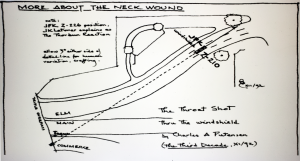
Here is a shot I took from under the triple overpass in our 2014 road tour, where we (Jim, Gary and I) drove from New Orleans to Dallas for the 51st observance of the assassination. At that time, I dubbed this position the “cubby hole”. Note that the “S” curve of Elm Street makes cars stay stationary for at least 2-3 seconds as they negotiate the down slope. For a professional sniper, this is like shooting fish in a barrel!
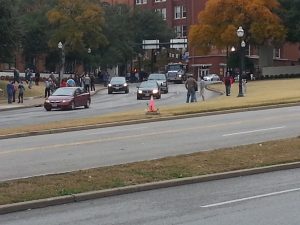
Here is a Blender representation of that position, showing the exact same view of oncoming cars on Elm Street.
The windshield
We cannot discuss the shot from the front without bringing up the windshield of the JFK limousine. The presence of a bullet hole in the windshield of the limousine was witnessed at Parkland Hospital by motorcycle patrolmen Sargent Stavis Ellis, James Chaney, and Harry Freeman. Their observations were recorded by Fred Newcomb in 1971 and were the basis of “the Newcomb tapes” which in turn was the main theme of my book “The JFK Horsemen” (2018).
Harry Freeman in “The Newcomb Tapes”
Whitney: It really was a hole and not a crack (17:24)
Freeman: It was a hole on the left side, to the left of the driver.
Whitney: How close were you when you looked at it?
Freeman: At that time? Oh heck right beside it, I could have touched it.
Whitney: You did touch it at all or anything.
Freeman: No Nah ha.
Whitney: You were quite sure it was a hole.
Freeman: Oh yes, yes! Bullet hole, you could tell it was a bullet hole.
Stavis Ellis in “The Newcomb Tapes”:
Whitney: Did you look, get a look at the car at all once it got to the hospital?
Ellis: The car?
Whitney: Once it was empty?
Ellis: Yes sir I sure did, it was a mass blood in the back seat, and a piece of the skull bone.
and there was a hole in the left front windshield..ah (17:30)
Whitney: You know how it got there by any chance?
Ellis: I would say from a shot, one of the shots that was shot at the President, one of them
there that, I don’t know I believe it was the first shot, I saw it hit the street right behind us,
threw up a flash of dust where it hit the concrete curb, and I saw a bunch of people fall and I
thought….
Whitney: You sure it was a hole? ’cause we were just thinking it was a crack…
Ellis: It was a hole, you could put a pencil through it (18:04) I showed it to Officer Chaney out
there at the hospital, and the angle on it was like if something came over high on the right rear
side came down right in front of the driver and out the glass into the street about 5 or 6 inches
to the right of the left post of the windshield, it would have been right, just over and to the front of the steering wheel and out at that angle. The trajectory of the hole and the building and the
place where it hit the street would have been just exactly right. I showed it to Chaney at the
hospital, you could take a regular standard writing pencil, wood pencil, and stick it through
there, about that size, and said that’s where that first one went, he says, some Secret Service
agent that’s no bullet hole that’ a fragment. It wasn’t a damn fragment – it’s a hole. The bullet
hit the street down there, the FBI come out there and cut a plug of that concrete curb out for
the investigation, where the bullet hit.
SMU Med student Evalea Glanges:
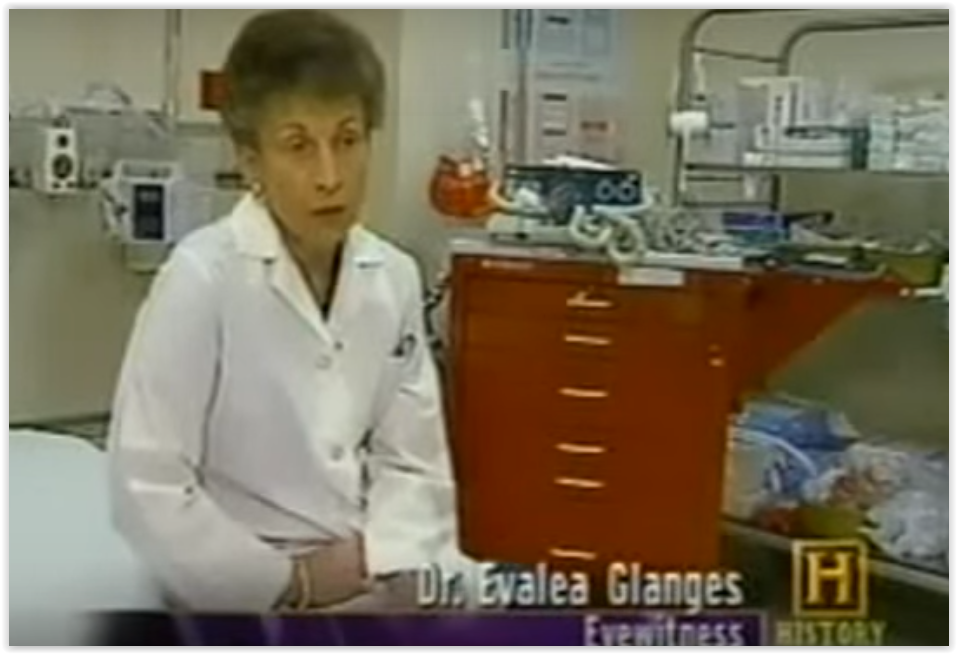
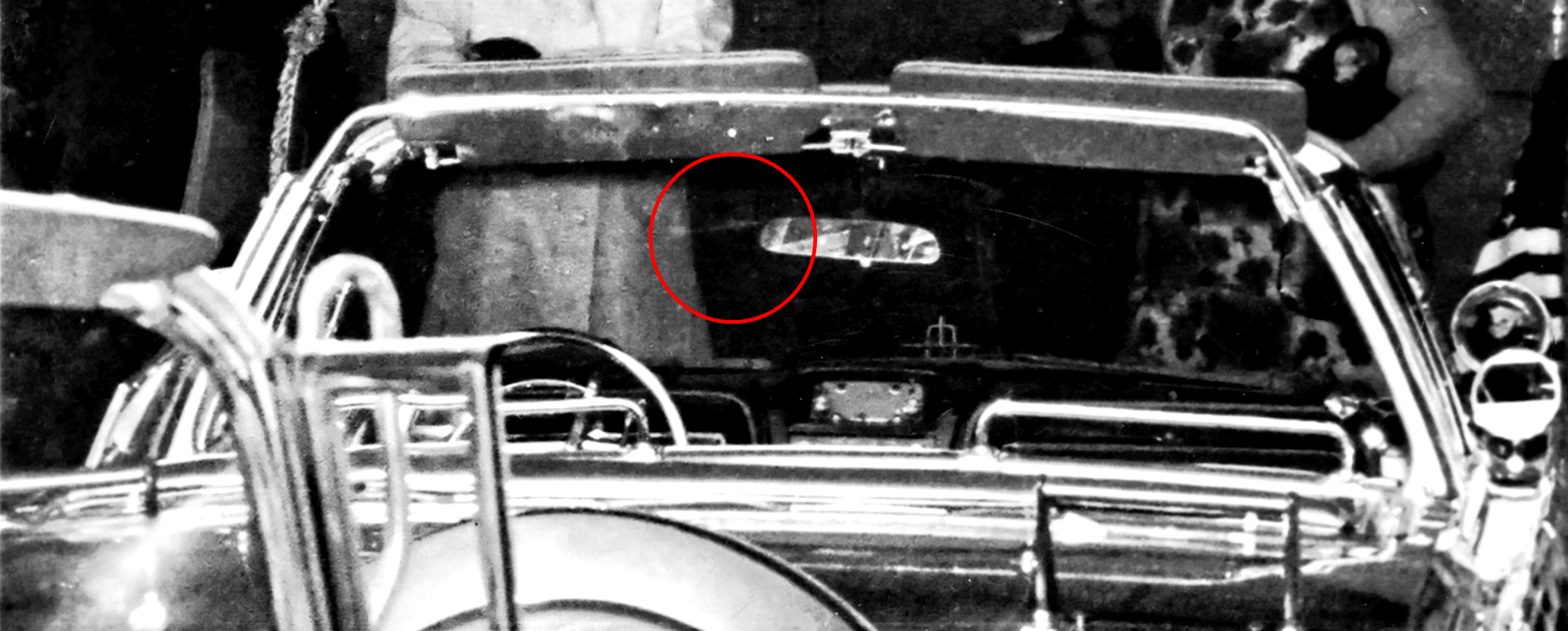
George Whittaker
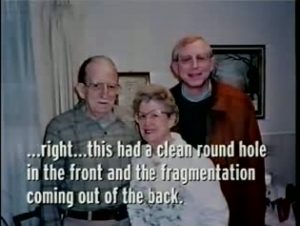
In his documentary The Men Who Killed Kennedy, Nigel Turner identified George Whitaker Sr, as the Ford Motor Company employee mentioned in Weldon’s work. Douglas Horne, in his book, Inside the ARRB pg 1447 also identified Whitaker as the employee who witnessed the condition of the windshield, and verified that the hole had been caused by a shot from the front, with fragmentation and beveling present on the inside. Shards of this fragmentation called stippling were known to have struck the President in the face and neck. These were later removed and its effects covered with wax during the process of embalming and preparation of the body for burial.
Was there enough clearance?
This super closeup of the Cancellare photograph shows that the area in question had ample clearance to allow a shot without any cars interfering.
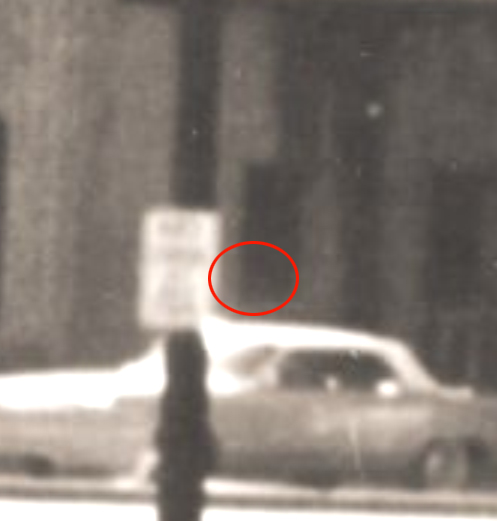
The Cancellare hypothesis
Some researchers have posited the hypothesis that a sniper can be seen in one of the Cancellare photographs in the background, where this image of a man with what appears to be a rifle can be seen.
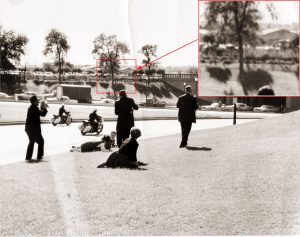
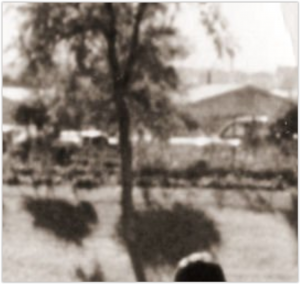
When we take a look at the view from that position in our Blender model, this is what is seen:

Even though this image is at Z255 and the Altgens6 photograph, the angle of the windshield to JFK’s neck does not line up.
The next image is of the utility box located precisely adjacent to the “cubby hole” position which Roy Schaeffer has pointed out as the most plausible location for a sniper to have executed the throat shot.
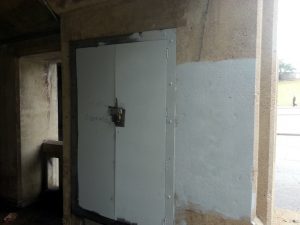
Professor Jim Fetzer poses at the location believed to have been the position of the sniper who shot JFK through the windshield and his throat. Nice and cozy, well protected, and out of view.
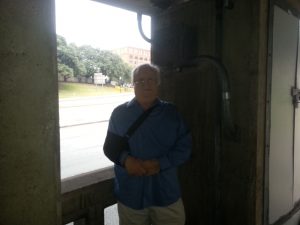
This next photo was taken by Gary King a couple of days ago, showing the inner dimensions of the utility box. Roy Schaeffer’s hypothesis is that this was way too convenient a spot where a weapon could have been stashed away after the deed, and I cannot agree more!
